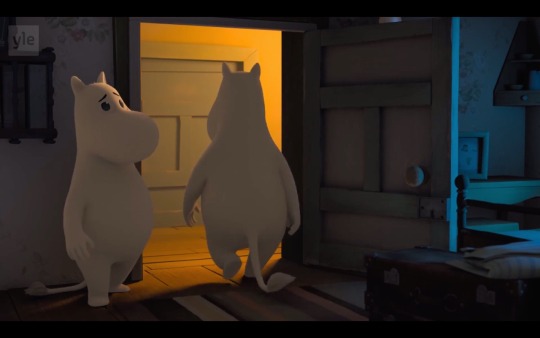Wizard of Atoms, Molecules, Quantum Mechanics, Radioactivity, Nuclear Fission, and Nuclear Fusion
Don't wanna be here? Send us removal request.
Text
The list of gifts I would appreciate most accurately portrays me as a real-life Stardew Valley character:
• Cowboy Hat
• Cheese Wheel
• Maple Syrup
• Cowboy Boots
• Jar of Honey
• Duck Egg
• Baseball-sized Diamond
• Goat Milk
• Goat Cheese
28 notes
·
View notes
Text
Me watching the 2020 Presidential debates:
By the gods! There's a psychopath on the loose! *casts Stoneflesh on self*
6 notes
·
View notes
Text
Me watching Tarrlok's decision in his last scene from LoK S1

119 notes
·
View notes
Text
Georgians flirting: You're my little Georgia peach
Michiganders flirting: You're my little Michigan cherry
Wisconsinites flirting: You're my little Wisconsin cheese curd
12 notes
·
View notes
Text
Me: *aced every English class from grade school through college, mastering the intricacies of English grammar*
Also me: I seen you ain't known the difference between “lay” and “lie.”
9 notes
·
View notes
Text
In case anyone needs metric comparison for some things: 1 fluid ounce = 29.57 milliliters 1 cup = 336.59 milliliters 1 quart = 0.95 liters 1 gallon = 3.79 liters 1 ounce = 28.35 grams 1 pound = 453.59 grams 1 stone = 6.35 kilograms 1 Imperial ton = 1.12 U.S. tons = 1,016.05 kilograms 1 inch = 2.54 centimeters 1 foot = 30.48 centimeters 1 yard = 0.91 meters 1 mile = 1.61 kilometers 1 square foot = 0.093 square meters 1 square yard = 0.84 square meters 1 acre = 4,046.86 square meters = 40.47 ares = 0.40 hectares 1 square mile = 2.59 square kilometers = 259 hectares
For those of y’all who don’t understand the English measuring system... (contemporary measurements bolded)
Volume
Note that most things are two times greater than the previous, but some measurements have become obsolete, making the contemporary system convoluted. The English system follows a 2ⁿ system while the metric system follows a 10ⁿ system.
1 minim ≈ 1 drop of water
20 minim = 1 fluid scruple
3 fluid scruples = 60 minim = 1 fluid dram/drachm (dr)
4 fluid scruples = 80 minim = 1 teaspoon (tsp)
3 teaspoons (tsp) = 1 tablespoon (tbsp) = 4 fluid drams/drachms (dr)
2 tablespoons (tbsp) = 1 fluid ounce (oz)
4 fluid ounces (oz) = 1 jack
8 fluid ounces (oz) = 1 cup = 2 jacks
A “cup” used to be referred to as “gill/jill” (gi).
2 cups = 1 pint (pt)
2 pints (pt) = 1 quart (qt)
2 quarts (qt) = 1 pottle
4 quarts (qt) = 1 gallon (gal) = 2 pottles
1 peck = 2 gallons (gal)
1 kenning = 2 pecks
1 bushel = 4 pecks = 2 kennings
1 strike = 2 bushels
1 coomb = 2 strikes
1 seam = 2 coombs
Weight
Note that many of these things stem from the dram/drachm, which was something to which a common person would have access and be able to conceptualize.
1 grain (gr) ≈ a seed of cereal
1 dram/drachm (dr) = the weight of silver in a Greek coin, the drachma
16 dram/drachm (dr) = 1 ounce (oz)
7,000 grains (gr) = 16 ounces (oz) = 1 pound (lb)
“lb” stands for libra, Latin for “scales/balance”
7 pounds (lbs) = 1 nail
14 pounds (lbs) = 1 stone (st) = 2 nails
28 pounds (lbs) = 4 nails = 2 stones (st) = 1 tod
1 hundredweight (qwt) = 4 tods = 112 pounds (lbs)
1 ton (t) = 2,240 pounds (lbs) = 160 stone (st) = 20 hundredweights (qwt)
1 slug = a mass that accelerates by 1 ft/s² when a force of one pound is exerted on it ≈ 32.17 pounds (lbs)
Length
Note that many of these measurements stem from estimates on the body: digits, fingers, palms, hands, cubits (the forearm), fathom (outstretched arms); or things that people would see at construction sites: nail, rod, chain.
1 line ≈ a poppyseed
1 barleycorn = 4 lines
3 barleycorn = 1 inch (in)
1 digit = ¾ inch (in)
1 finger = ⅞ inch (in)
1 inch (in) = 1,000 thous (th)
1 nail = 3 digits = 2¼ inches (in)
1 palm = 3 inches (in)
1 hand = 4 inches (in)
1 shaftment = 6 inches (in)
1 link = 7.92 inches (in) = 1% of a standard chain
1 span = 3 palms = 9 inches (in)
1 foot (ft) = 12 inches (in) = 4 palms = 3 hands = 2 shaftments
1 cubit = 18 inches (in) = 1½ feet (ft)
1 yard (yd) = 3 feet (ft) = 2 cubits = 36 inches (in)
1 ell = 45 inches (in)
1 fathom (ftm) = 2 yards (yd) = 6 feet (ft) = 72 inches (in)
1 rod/perch/pole = 16½ feet (ft)
1 chain (ch) = 4 rods = 22 yards (yd) = 66 feet (ft) = 100 links
1 furlong/stade (fur) = 40 rods = 660 feet (ft)
A furlong was considered the distance a plow team could furlough without rest.
1 mile (mi) = 5,280 feet (ft) = 1,760 yards (yd) = 8 furlongs/stades (fur)
The obscure numbering in contemporary feet and yards is due to its original definition in furlongs/stades.
10 cables = 1 nautical mile
1 nautical mile ≈ 1.15 miles (mi)
A nautical mile was originally defined as one minute of latitude along any degree of longitude.
1 league (lea) = 3 miles (mi)
Area
Note the focus on farming; land was largely defined according to a farmer’s work.
1 perch = 1 square rod
1 rood = 1 furlong in length by one rod in width = 40 perches
1 acre = 43,560 square feet (sq ft) = 4,840 square yards (sq yd) = 4 rood = 1 furlong in length by one chain in width
An acre is traditionally defined as the area a farmer can reasonably plow in one day.
“Acre” is a Saxon word for “field.”
1 bovate = 15 acres
A bovate is traditionally defined as the area an ox can reasonably plow in one year.
1 virgate = 2 bovates = 30 acres
A bovate is traditionally defined as the area a pair of oxen can reasonably plow in one year.
1 carucate = 4 virgates = 8 bovates = 240 acres
A carucate is traditionally defined as the area an eight-oxen team can reasonably plow in one year.
1 square mile (sq mi) = 640 acres = 3,097,600 square yards (sq yd) = 27,878,400 square feet (sq ft)
#english system#english vs metric#english system vs metric system#metric system#imperial system#imperial vs metric#imperial system vs metric system#funny#meme#memes#informational#educational#dumb
11 notes
·
View notes
Text
For those of y’all who don’t understand the English measuring system... (contemporary measurements bolded)
Volume
Note that most things are two times greater than the previous, but some measurements have become obsolete, making the contemporary system convoluted. The English system follows a 2ⁿ system while the metric system follows a 10ⁿ system.
1 minim ≈ 1 drop of water
20 minim = 1 fluid scruple
3 fluid scruples = 60 minim = 1 fluid dram/drachm (dr)
4 fluid scruples = 80 minim = 1 teaspoon (tsp)
3 teaspoons (tsp) = 1 tablespoon (tbsp) = 4 fluid drams/drachms (dr)
2 tablespoons (tbsp) = 1 fluid ounce (oz)
4 fluid ounces (oz) = 1 jack
8 fluid ounces (oz) = 1 cup = 2 jacks
A “cup” used to be referred to as “gill/jill” (gi).
2 cups = 1 pint (pt)
2 pints (pt) = 1 quart (qt)
2 quarts (qt) = 1 pottle
4 quarts (qt) = 1 gallon (gal) = 2 pottles
1 peck = 2 gallons (gal)
1 kenning = 2 pecks
1 bushel = 4 pecks = 2 kennings
1 strike = 2 bushels
1 coomb = 2 strikes
1 seam = 2 coombs
Weight
Note that many of these things stem from the dram/drachm, which was something to which a common person would have access and be able to conceptualize.
1 grain (gr) ≈ a seed of cereal
1 dram/drachm (dr) = the weight of silver in a Greek coin, the drachma
16 dram/drachm (dr) = 1 ounce (oz)
7,000 grains (gr) = 16 ounces (oz) = 1 pound (lb)
“lb” stands for libra, Latin for “scales/balance”
7 pounds (lbs) = 1 nail
14 pounds (lbs) = 1 stone (st) = 2 nails
28 pounds (lbs) = 4 nails = 2 stones (st) = 1 tod
1 hundredweight (qwt) = 4 tods = 112 pounds (lbs)
1 ton (t) = 2,240 pounds (lbs) = 160 stone (st) = 20 hundredweights (qwt)
1 slug = a mass that accelerates by 1 ft/s² when a force of one pound is exerted on it ≈ 32.17 pounds (lbs)
Length
Note that many of these measurements stem from estimates on the body: digits, fingers, palms, hands, cubits (the forearm), fathom (outstretched arms); or things that people would see at construction sites: nail, rod, chain.
1 line ≈ a poppyseed
1 barleycorn = 4 lines
3 barleycorn = 1 inch (in)
1 digit = ¾ inch (in)
1 finger = ⅞ inch (in)
1 inch (in) = 1,000 thous (th)
1 nail = 3 digits = 2¼ inches (in)
1 palm = 3 inches (in)
1 hand = 4 inches (in)
1 shaftment = 6 inches (in)
1 link = 7.92 inches (in) = 1% of a standard chain
1 span = 3 palms = 9 inches (in)
1 foot (ft) = 12 inches (in) = 4 palms = 3 hands = 2 shaftments
1 cubit = 18 inches (in) = 1½ feet (ft)
1 yard (yd) = 3 feet (ft) = 2 cubits = 36 inches (in)
1 ell = 45 inches (in)
1 fathom (ftm) = 2 yards (yd) = 6 feet (ft) = 72 inches (in)
1 rod/perch/pole = 16½ feet (ft)
1 chain (ch) = 4 rods = 22 yards (yd) = 66 feet (ft) = 100 links
1 furlong/stade (fur) = 40 rods = 660 feet (ft)
A furlong was considered the distance a plow team could furlough without rest.
1 mile (mi) = 5,280 feet (ft) = 1,760 yards (yd) = 8 furlongs/stades (fur)
The obscure numbering in contemporary feet and yards is due to its original definition in furlongs/stades.
10 cables = 1 nautical mile
1 nautical mile ≈ 1.15 miles (mi)
A nautical mile was originally defined as one minute of latitude along any degree of longitude.
1 league (lea) = 3 miles (mi)
Area
Note the focus on farming; land was largely defined according to a farmer’s work.
1 perch = 1 square rod
1 rood = 1 furlong in length by one rod in width = 40 perches
1 acre = 43,560 square feet (sq ft) = 4,840 square yards (sq yd) = 4 rood = 1 furlong in length by one chain in width
An acre is traditionally defined as the area a farmer can reasonably plow in one day.
“Acre” is a Saxon word for “field.”
1 bovate = 15 acres
A bovate is traditionally defined as the area an ox can reasonably plow in one year.
1 virgate = 2 bovates = 30 acres
A virgate is traditionally defined as the area a pair of oxen can reasonably plow in one year.
1 carucate = 4 virgates = 8 bovates = 240 acres
A carucate is traditionally defined as the area an eight-oxen team can reasonably plow in one year.
1 square mile (sq mi) = 640 acres = 3,097,600 square yards (sq yd) = 27,878,400 square feet (sq ft)
#english#metric#english vs metric#english system#metric system#systems of measurement#educational#american#america#yeehaw#imperial#imperial system#imperial vs metric#english system vs metric system#imperial system vs metric system
11 notes
·
View notes
Text
53K notes
·
View notes
Text
I'm still getting notes from this post to this day. I've seen spin-off memes and straight up copies, but the good Lord blessed me with the origin.
Me preparing extra alarms because I know I’ll just turn the first eight off and go back to bed

7K notes
·
View notes
Text





this is one of the funniest jokes in the entire series and it happens like two minutes into the first episode
101K notes
·
View notes
Text
Venom (2018) and Ratatouille (2007) have the same plotline
9K notes
·
View notes
Text
You ever have something about yourself, a quirk or whatever, that you know isn’t “normal” but that you forget isn’t normal?
like
I love coffee and I drink roughly two liters per day, so my friends bought me this massive liter-sized travel mug. But I have a sensitive tongue and don’t like to sip my coffee, so I don’t like it hot. But because my tongue is sensitive and I want to chug chug my mug mug, I don’t like it cold either. So I leave my coffee out overnight so it’s lukewarm by the time I leave for uni in the morning. I know this isn’t normal, but I love lukewarm coffee
but sometimes I forget that’s not normal
like once my friend was sleepy and thirsty so I offered her some of my coffee, and she loves coffee, especially the black coffee I make, so she grabs the mug from me all happy-like
then she took a sip and her face immediately turned to disgust and she started gagging, and everyone around looked at her, and i did too, wondering why she didn’t like my coffee
“WHY IS IT LUKEWARM?!?!?!” she screamed
My stomach dropped because now, with everyone in the room looking at me, I had to explain why I like to drink lukewarm coffee and prefer it to hot or cold coffee
2 notes
·
View notes
Text
People who unironically use smoke grenades in Call of Duty cannot be trusted.
2 notes
·
View notes
Text
oh to be a fat little seal on a rock enjoying life at my own pace
84K notes
·
View notes